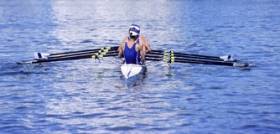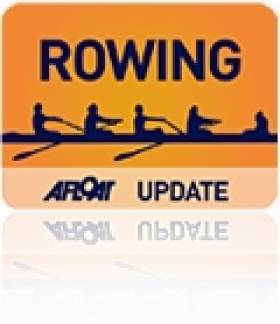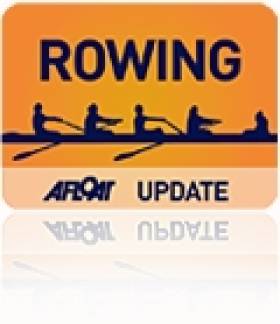Displaying items by tag: Harrington
Boomer and Harrington Complete Programme at World Cup Rowing
#Rowing: Ireland’s Patrick Boomer and Andy Harrington finished fifth in the D Final of the men’s pair at the World Cup Regatta in Lucerne this morning. Poland led from start to finish, and while Ireland moved out of the sixth as the race went on they did not break into the leading group of Poland, Switzerland and Australia.
World Cup Regatta, Lucerne, Day Two (Irish interest; selected results)
Men
Pair – D Final (Places 19 to 24): 1 Poland 6:40.95; 5 Ireland (P Boomer, A Harrington) 6:53.83.
O'Donovan and O'Driscoll Given Big Test
#Rowing: Sanita Puspure and Paul O’Donovan were impressive winners of the single sculls tests at the Ireland trial at the National Rowing Centre today. Shane O’Driscoll and Mark O’Donovan won their pairs race, but only by 2.8 seconds from the very tall crew of Andy Harrington and Patrick Boomer.
Denise Walsh won the lightweight single sculls from Margaret Cremen. Aoife Casey was absent because of exams. The top women’s pair were Aifric Keogh and Emily Hegarty, while Aaron Keogh of Three Castles beat Rory O’Neill of Castleconnell in the junior single sculls.
Harrington a Winner at London Metropolitan Regatta
#Rowing: Andrew Harrington won the intermediate one single sculls at London Metropolitan Regatta at Dorney Lake today. The UCC man was also fourth in the senior single.
The Ireland under-23 lightweight double finished fifth in the combined elite/senior event. They were the fastest senior crew.
London Metropolitan Regatta, Dorney Lake (Selected Results; Irish interest)
Men
Fours – Elite, coxed: 3 Trinity (P Moreau, M Corcoran, L Hawkes, M Kelly; cox: C Flynn) 6:34.88
Sculling – Quadruple – Elite: 1 UCC, Skibbereen, UCD, Shandon (F McCarthy, S O’Connell, S O’Connor, C Hennesy) 6:07.64.
Double – Elite/Senior: 5 Skibbereen/UCC (J McCarthy, D Synnott) 7:02.57.
Single – Senior: 4 UCC (A Harrington) 7:28.87. Intermediate One: 1 UCC (Harrington) 7:33.35; 5 Garda (D Kelly) 7:47.49.
Women
Four – Combined: 3 UCD intermediate one (E Lambe, A Crowley, S Bennett, K O’Connor) 7:22.46. Intermediate, coxed: 3 Commercial (Sinead Dolan, M Bracken, A O’Leary, E Gary; cox: E Moody) 7:38.08.
UCD Push NUIG/Grainne Mhaol Hard at Cork Rowing Regatta
#ROWING: Gráinne Mhaol/NUIG were pushed hard by UCD, but came away with the Division One eights title at Cork Grand League Regatta at the National Rowing Centre. NUIG came in third, despite having to do without the services of Kevin Neville, who had fallen ill during the heats. The experienced Gráinne Mhaol crew of Dave Mannion, Alan Martin, Cormac Folan and James Wall won the Division One four, while Skibbereen won the women’s four.
Andy Harrington of UCC won the Division One single sculls from Eimantas Grigalius of Three Castles and Fergus Fauvel, a New Zealander studying in Galway. Fauvel also rowed at number four for the winning eight.
Catríona Jennings of Commercial, who only took up rowing in the past two years after competing as a runner at the Olympic Games, won the Division One single sculls.
The timing system at the regatta, a bugbear at a number of Grand League events, caused some difficulties.
#WorldJuniorRowing: The Ireland men’s double scull of Jack Casey and Andy Harrington missed out on a place at the semi-finals at the World Junior Rowing Championships at Trakai in Lithuania this morning. In tailwind conditions, Romania set a hot pace in the quarter-final, with Britain and Lithuania coming closest to matching them. The first three places were the crucial ones and Ireland were in touch to half way. But in the second half, the top three moved away and Ireland ended up sixth. Lithuania took second from Britain coming up to the line.
World Junior Rowing Championships, Trakai, Lithuania, Day Three (Selected Results, Irish interest)
Men
Double Sculls – Quarter Final One (First Three to A/B Semi-Final; rest to C/D Semi-Final): 1 Romania 6:21.73, 2 Lithuania 6:25.62, 3 Britain 6:26.80; 4 Russia 6:36.37, 5 Croatia 6:40.91, 6 Ireland (A Harrington, J Casey) 6:41.41.
































































